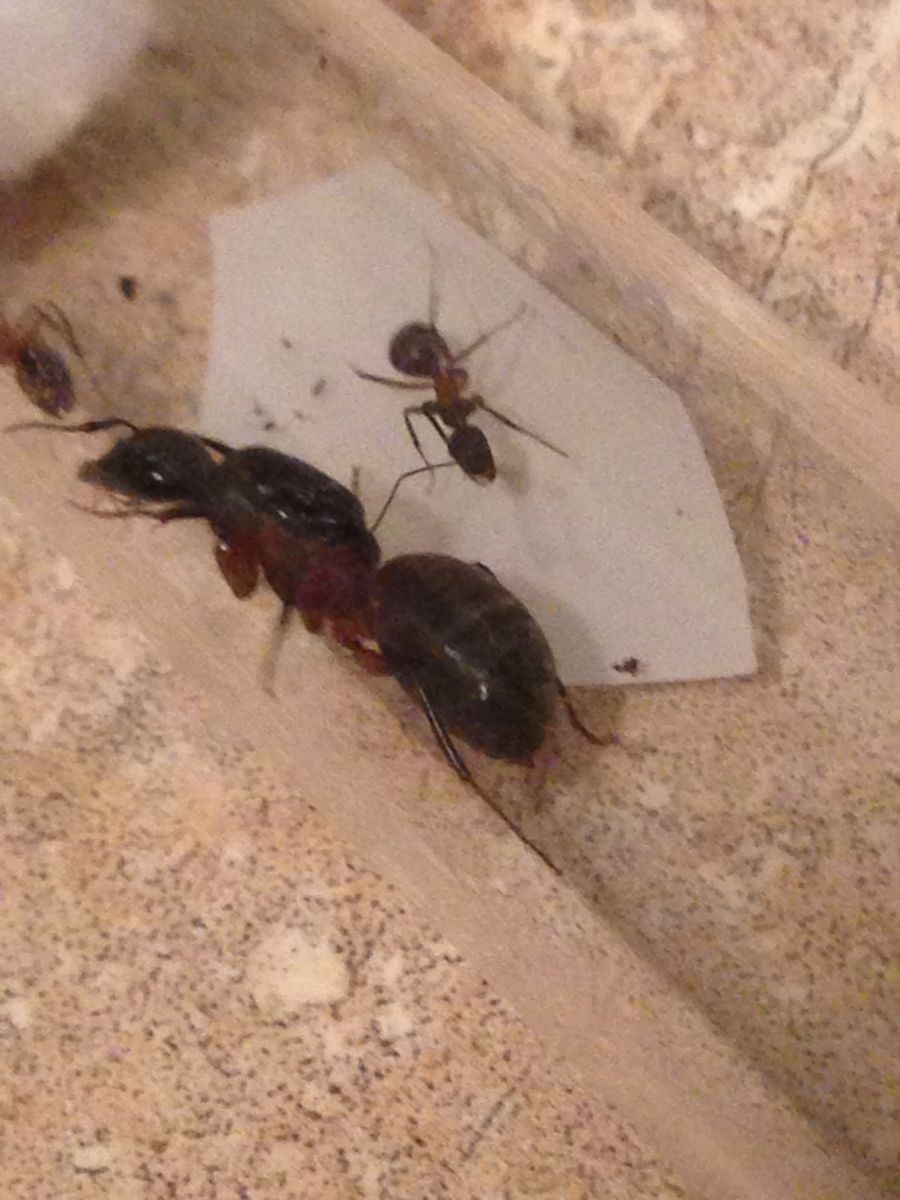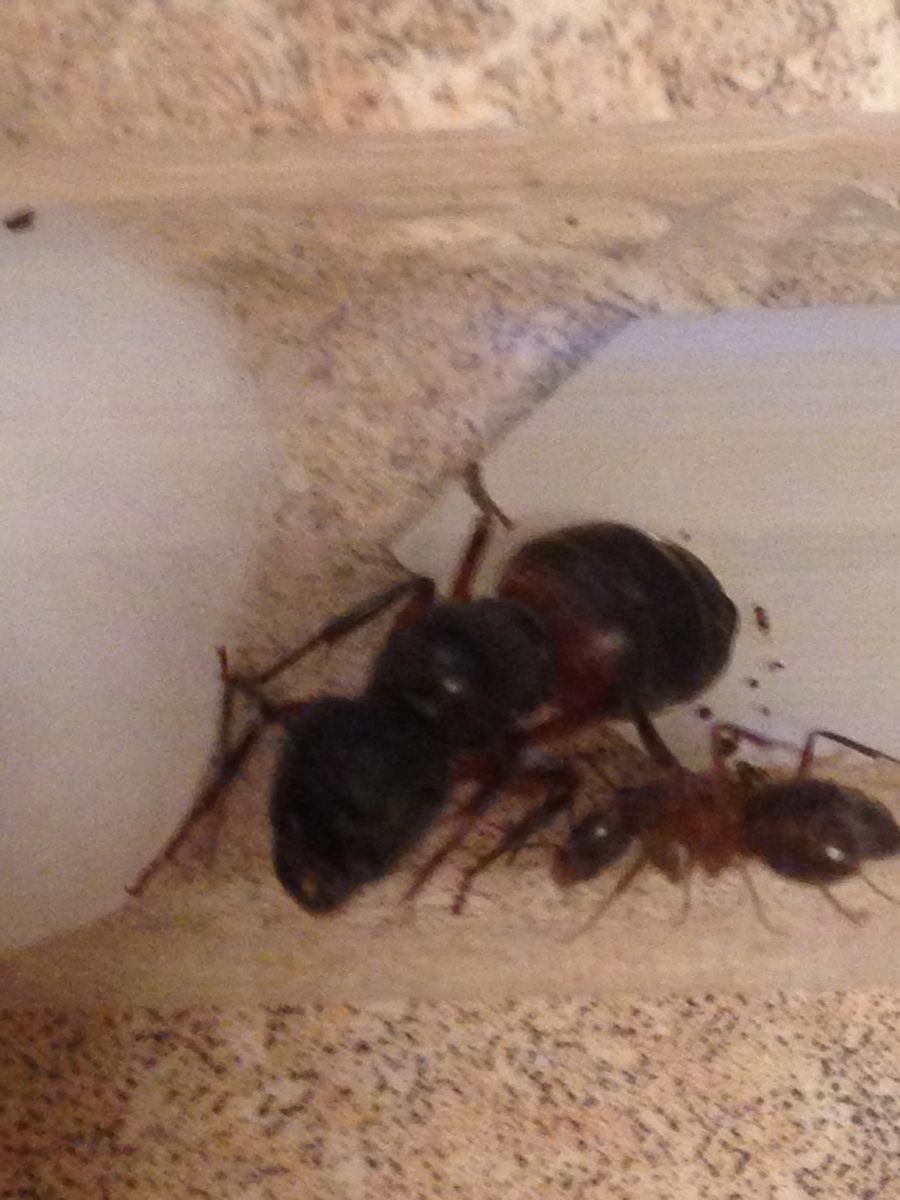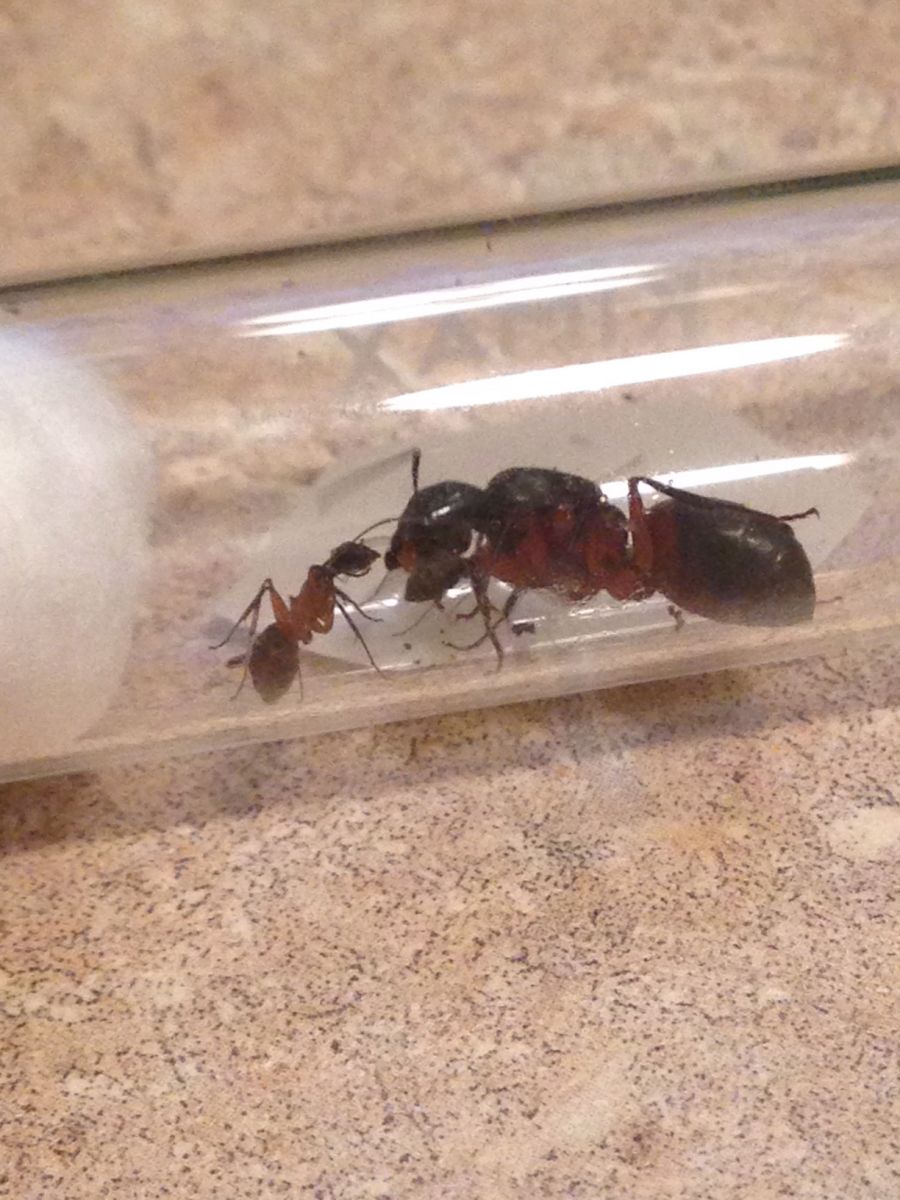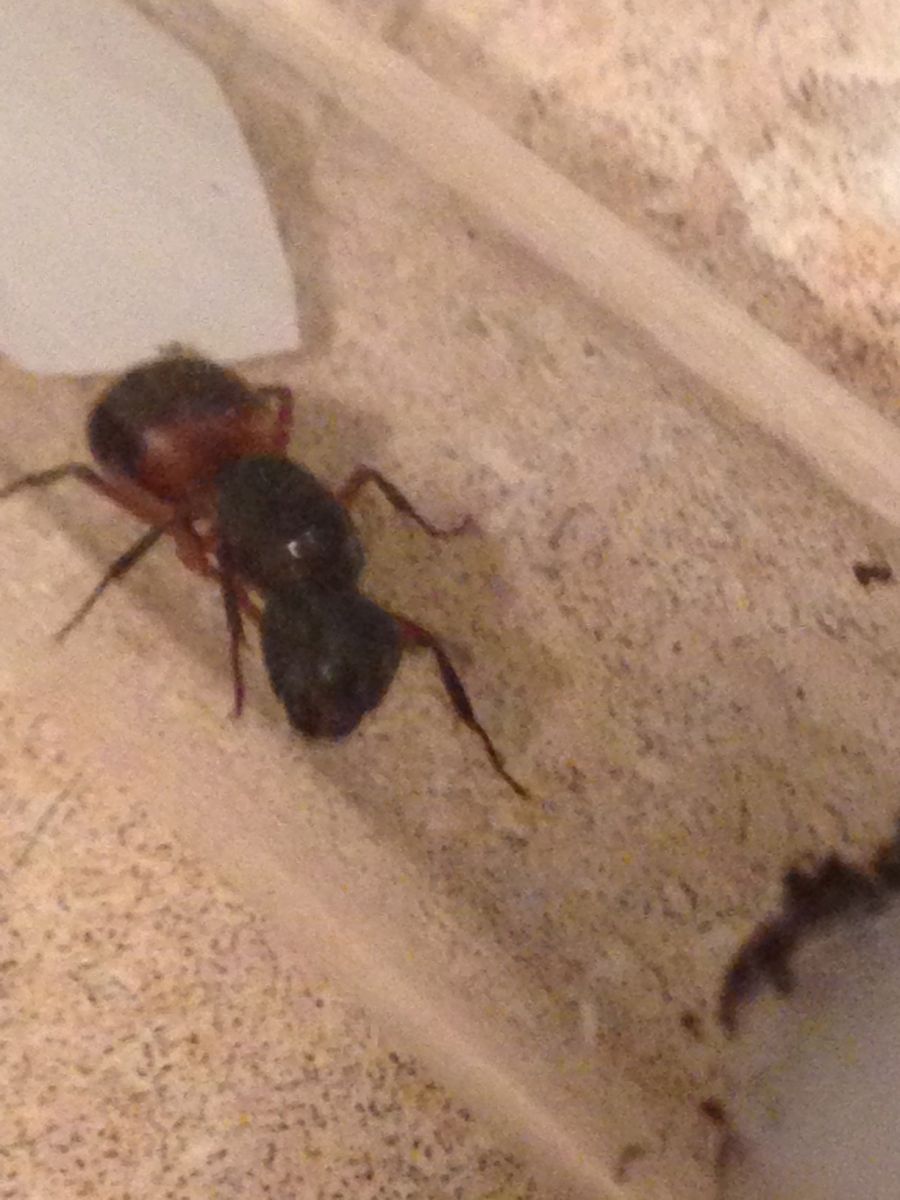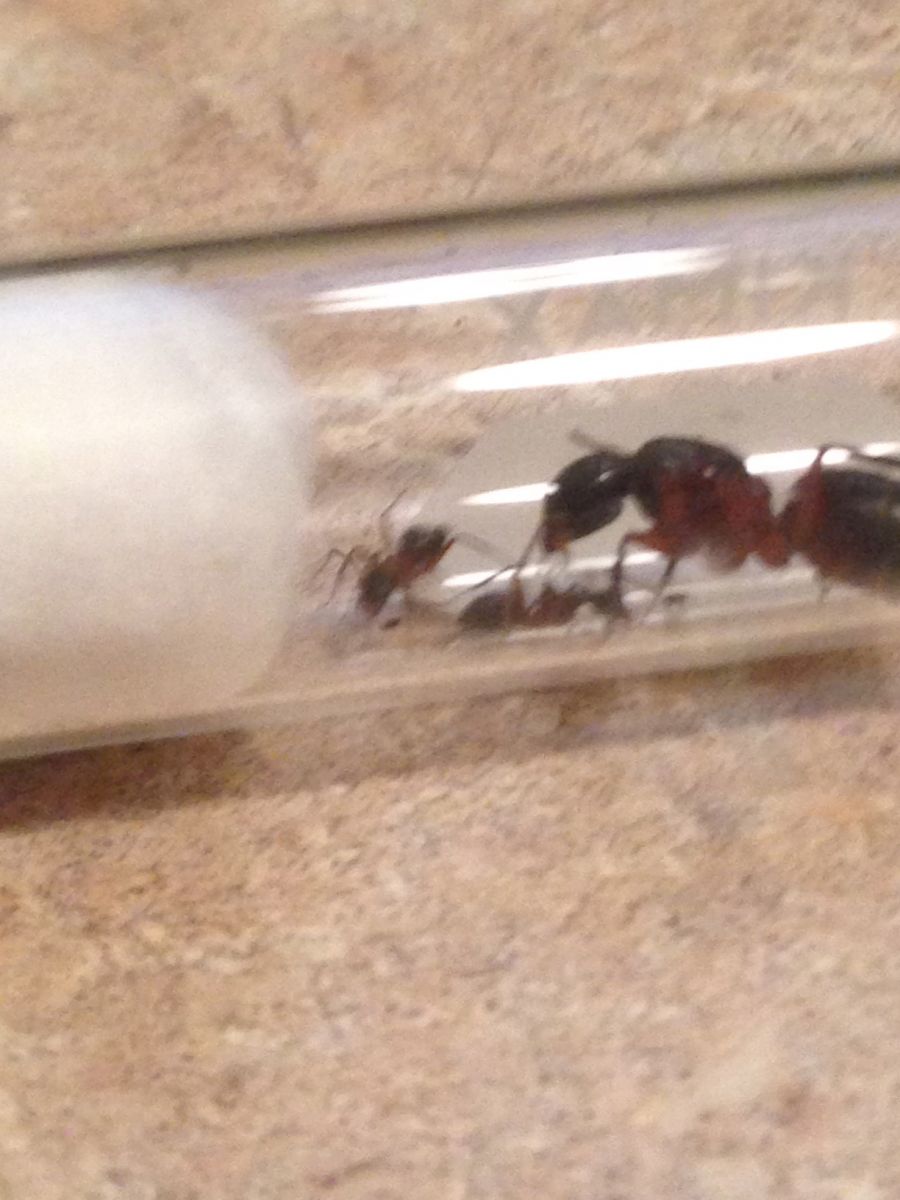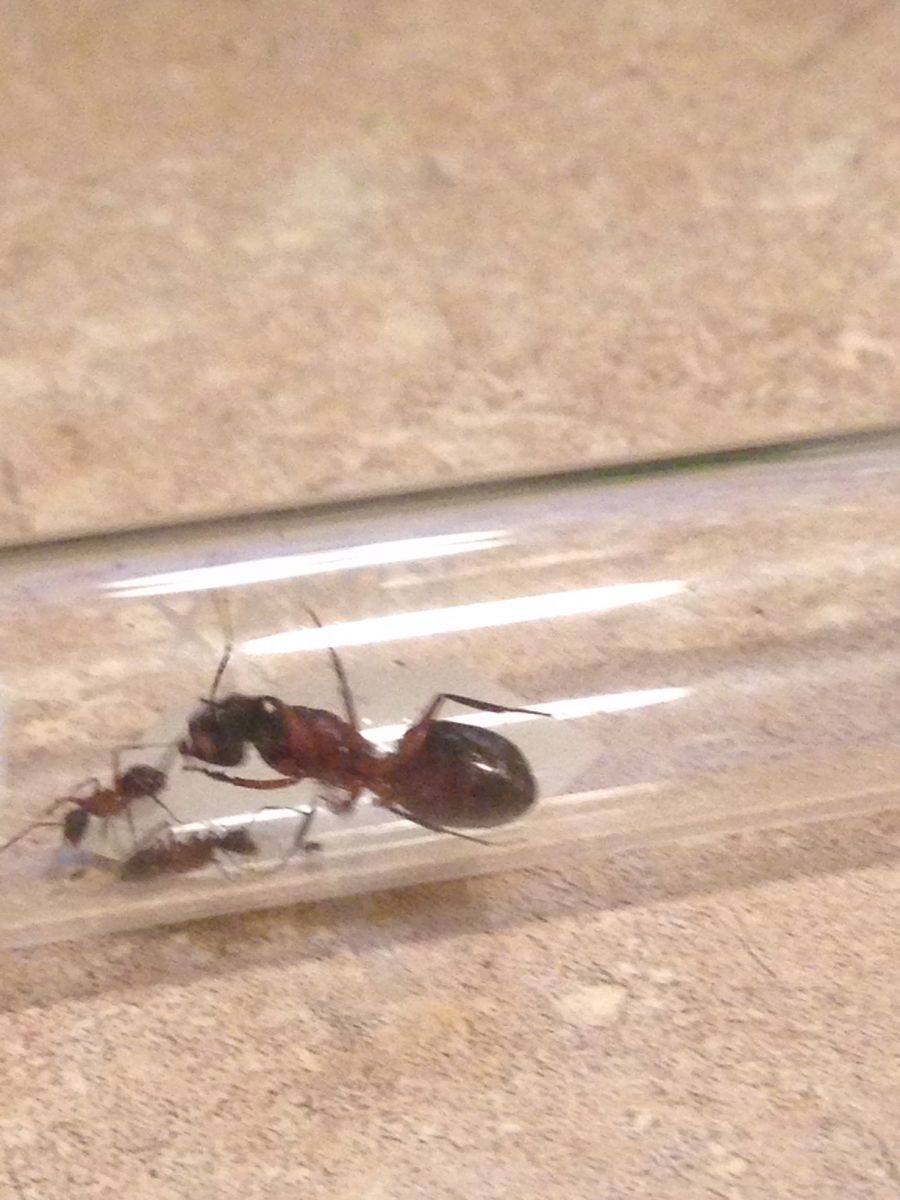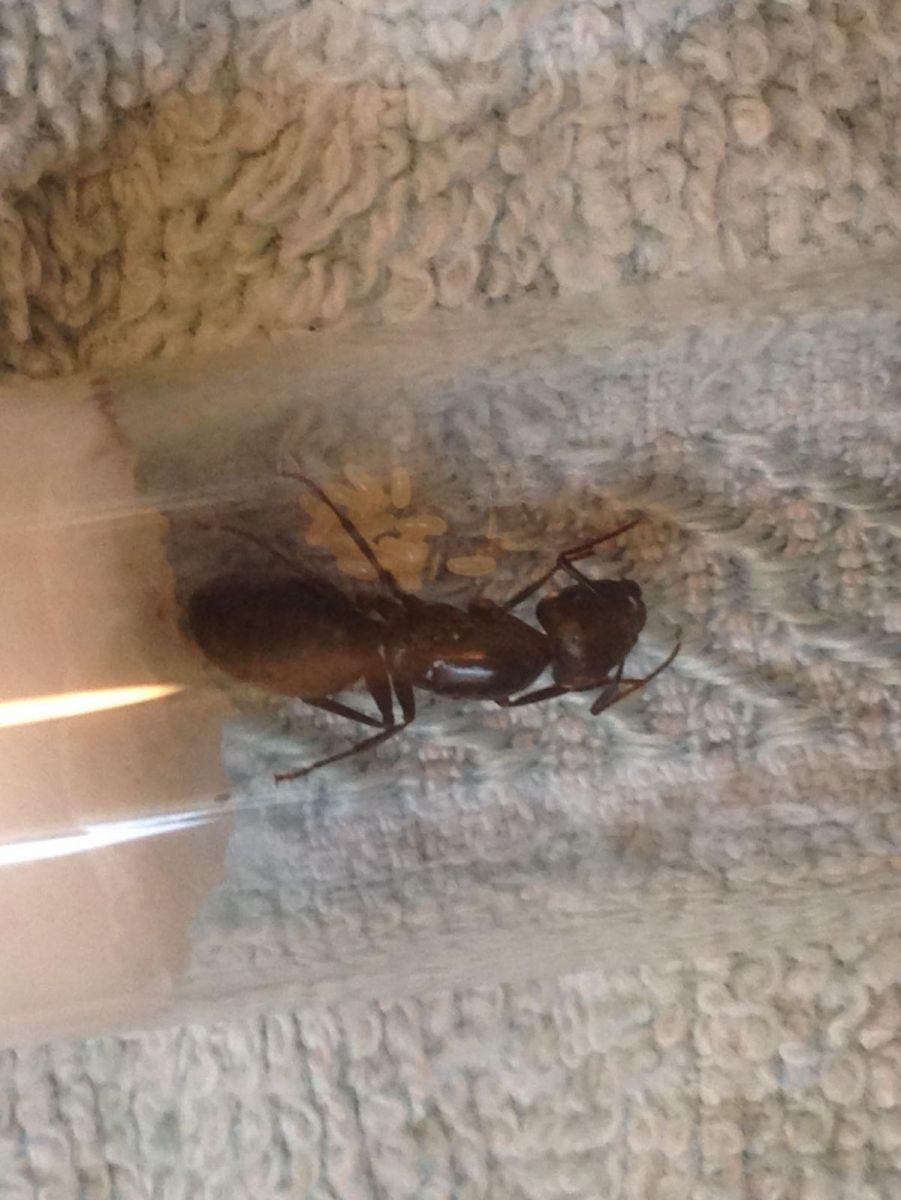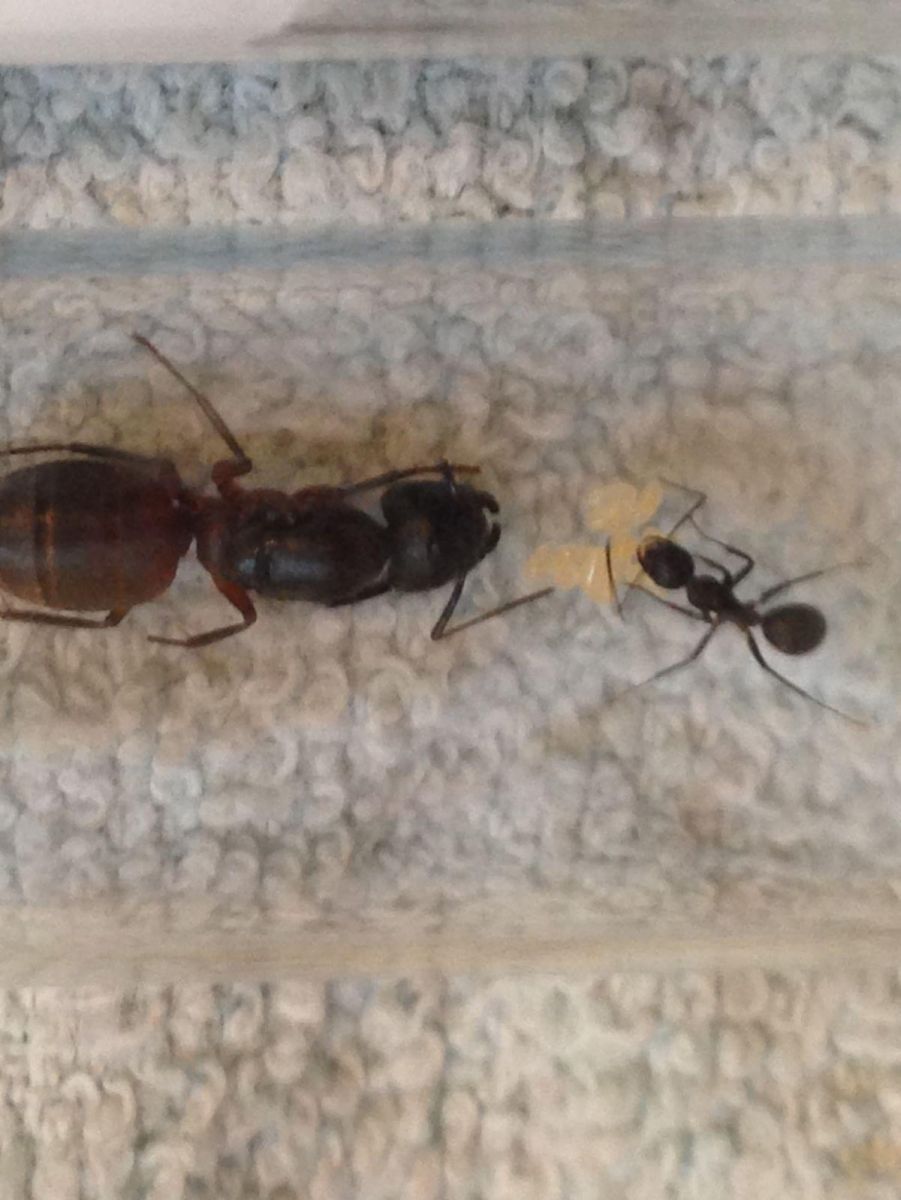Today I found my first queen ever, and am anxious to get thoughts on an ID. She seems huge!
This was found today in Columbus, OH at a metro park. I peeled back the bark on a log, and found this queen and 2 workers just setting there. She is red and black and 18 mm long.
Also interested to hear thoughts on the fact that she was found with only 2 workers. Does this indicate she was a recent nuptial flight or more established? (Not sure the cycle time of new workers) I did not see any eggs in the area.
